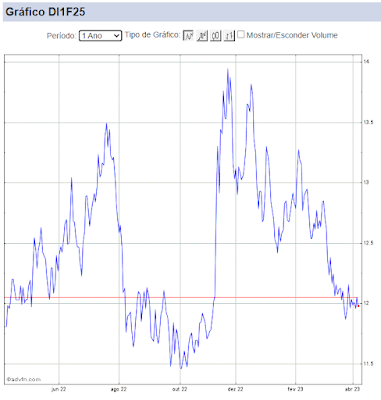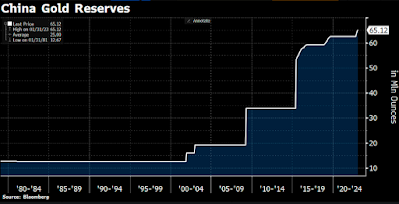Still a rocky path...
A despeito da aparente tranquilidade
das bolsas na Europa e nos EUA essa manhã, e um mercado de commodities mais
estável, estamos observando mais uma rodada de pressão nos ativos emergentes,
em especial nas moedas, novamente liderados pela Turquia. Na China, a
noite foi de CNY estável, mas de no queda (entre 1% e 2%) dos índices de bolsa.
De maneira geral, ainda não vi os problemas em ambos os países serem
endereçados de maneira estrutural.
Na Turquia, em conference call
com investidores na manhã de ontem, o Ministro das Finanças fez um discurso
relativamente ortodoxo, afirmando que não irão implementar controle de capitais
e adotarão as medidas necessárias para estabilizar a economia. Contudo, colocou
grande parte do peso do que está acontecendo no país no ambiente internacional,
não deu indicações de que pretende elevar as taxas de juros ou pedir ajuda
financeira ao FMI, o que ainda dá alguma sensação de que estão em “negação” em
relação a real situação da economia. Indicou que pretendem manter uma política
fiscal apertada, o que pode ser visto como positivo. Todavia, o país apresenta
menos de 30% de dívida\PIB. O problema do país não é fiscal, mas sim seu
balanço de pagamentos e sua inflação de curto-prazo. O fiscal ajuda a inflação estruturalmente,
mas o monetário é necessário para ajudar a inflação e a moeda no curto-prazo. Enfim,
ainda parece que a situação poderá piorar antes de que medidas concretas na
direção correta sejam tomadas.
No Brasil a notícia (rumor) de que Alckmin poderia ser denunciado pelo
MP ainda antes do primeiro turno levou a uma forte deterioração dos ativos
locais no início da tarde. A dinâmica do mercado me leva a crer que os
investidores ainda colocam um peso razoável no crescimento de Alckmin uma vez
iniciada a corrida eleitoral. Assim, uma decepção nesta frente, poderia levar a
uma forte deterioração dos preços dos ativos locais. Continuo vendo a corrida eleitoral
como extremamente competitiva, com cerca de 4 candidatos podendo chegar ao
segundo turno. Combinações extremamente negativas poderiam ocorrer, a luz da opinião
do mercado em relação aos candidatos, ou combinações menos prejudiciais aos preços.
A volatilidade deverá permanecer.
Em relação a China, de acordo com o estrategista do Morgan Stanley que copio abaixo,
o país adotou estratégia diferente, drenando liquidez offshore para conter a
depreciação da moeda. Se, por um lado, isso ajuda a estabilizar o CNY, por
outro lado acaba colocando mais um importante banco central do mundo na direção
do aperto de liquidez, o que tem sido o principal problema para os ativos de risco
ao longo deste ano:
China tightens offshore liquidity… According to Reuters, the Shanghai
branch of the PBOC has banned banks in the Shanghai Free Trade Zone from
depositing or lending yuan offshore through interbank accounts. China draining offshore
liquidity, pushing 1y CNH forward points above 600bp has helped stabilise RMB
markets by reducing speculative flows. The difference between onshore
CNY and offshore CNH 3m fixings jumped 80bp overnight to 106bp, but remains low
when compared to levels reached during the height of RMB depreciation pressure
in late 2015 (over 700bp). Remember, the PBOC’s policy on the RMB, concretely
its USDCNY fixing relative to model expectations alongside interbank liquidity
conditions, is part of our four-factor USD scorecard, which
suggests the DXY will correct lower by 2% on a 3m change basis. However, China pushing the CNY-CNH
forward spreads wider (see first Exhibit) does not only stabilise
the RMB on FX markets, it also suggests that China has changed its strategy.
Draining offshore liquidity comes at a price, namely increasing RMB hedging
costs for potential offshore investors into RMB-denominated assets via the
Connect programmes.
...not boding well for offshore investors… Earlier this
year, it appeared China was targeting capital inflows to ease domestic
financial conditions which came under strain due to its balance sheet
de-risking strategies. Inflows via the Hong Kong- Shanghai Stock and Bond
Connect programmes picked up over the course of the past year and were still
positive in July despite the intense RMB sell-off in that month. However, with offshore liquidity
tightness pushing RMB interest rates higher, potential offshore investors into
China’s equity and bond markets may be discouraged as they find it difficult to
predict future hedging costs.
...indicating a changing strategy. Instead of attracting inflows,
China’s adjusted strategy may focus on preventing outflows. This finding
is also supported by our work on China’s balance of payments,
finding that the large share of the ‘errors & omissions’ and ‘other
investments’ components relative to the reduced size of the total balance may
be an indication that the capital account has been less effectively sealed to
prevent outflows than previously thought. In respect of its capital account,
China seems to have moved from encouraging inflows towards discouraging
outflows. As such, China
has become more defensive, which may explain its weak equity performance and
the commodity bear market. Yesterday, the State Council said China
will substantially support private capital investments to stabilise investment
and boost the vitality of China's economy. The continued weak performance of
the CSI 300 and CRB Rind indices suggests that the market has doubts on the
success of its policy approach.
Debt vs cash flow. Debt is a problem when it does not find adequate
cash flows to back it up. Creating debt to fund productivity-enhancing and
hence cash flow-generating investments is not only unproblematic; it is
desirable. However, the last decade has seen QE-inspired debt creation not
inspiring investment and hence keeping productivity gains near historic lows.
Corporates have repaid equity, handing capital back to investors thus pushing
asset prices and consumer-led demand up. Keeping debt sustainable when rates rise is the
challenge, and can only work with the help of productivity which boosts cash
flows. Starting in February, markets concluded that EM would be in a difficult
position as its cash position was regarded as too weak. EM assets started weakening in
a domino-like manner, starting with Argentina. Since debt is a global issue, we
wonder if the problem of the debt/cash flow mismatch goes beyond EM. If
the answer is yes, what FX conclusion is there to be drawn?
US volatility is too low. The second Exhibit shows how the
S&P 500 has diverged from the MSCI EM index. Indeed, the spread has reached
a multi-year extreme. Obviously,
the consensus concludes that the US could generate the cash flow required to
service debt in the long term. Hence, the market seems to assume US
productivity will pick up beyond a cyclical rebound, coming along with an
output gap-closed economy. Even investors who are optimistic on the long-term
US growth and productivity prospects may have to agree that the relative US stock market outperformance looks
stretched. The same could be said for FX. The DXY looks stretched and is
likely to correct lower from here.


Comentários
Postar um comentário